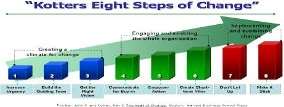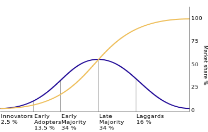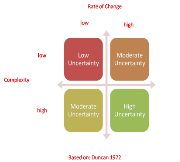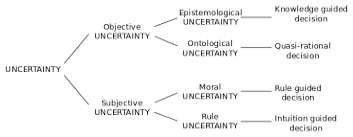Top Essay Writers
Our top essay writers are handpicked for their degree qualification, talent and freelance know-how. Each one brings deep expertise in their chosen subjects and a solid track record in academic writing.
Simply fill out the order form with your paper’s instructions in a few easy steps. This quick process ensures you’ll be matched with an expert writer who
Can meet your papers' specific grading rubric needs. Find the best write my essay assistance for your assignments- Affordable, plagiarism-free, and on time!
Posted: September 22nd, 2022
INTRODUCTION:
Due to, the increased competitiveness and arduous customers who desire to have high quality products at lowest prices; quality is acknowledged as a source of competitive advantage and have a higher strategic importance, is essential for success. (Spector and Beer 1994; Eskildson 1994) studies have shown that in organizations there are a lot of quality implementation failures, causes for theses failures are due to environmental uncertainty, Firm orientation, and Total quality management (TQM) was not properly addressed. (Puffer and McCarthy 1996)
UNCERTAINTY: It means lack of assurance, about something and facts in decision making (Duncan 1972; Lawrence and Lorsch 1967).
ENVIRONMENTAL UNCERTAINTY: It is a state, when conditions are constantly changing within a business environment (jauch and kraft 1986). Environmental uncertainty takes place by complete customer knowledge and for more worth in products and services. It has promoted the business scene, accordingly, feat of any organization now rely more on its ability for delivering quality products and services to customers. So, Business organizations are now confronted with a triangle of problems that they must sort out for building sustainability and success. This is by practicing uncertainty, strategy, and quality.
Environmental uncertainty rises or falls as environments differ along five simple dimensions:
Yes, completely! They’re a valid tool for getting sample papers to boost your own writing skills, and there’s nothing shady about that. Use them right—like a study guide or a model to learn from—and they’re a smart, ethical way to level up your grades without breaking any rules.
Homogeneity-heterogeneity: It is the number and range of areas having impact on the organization.
Concentration- dispersion: it is interconnection between components of the environment
Stability-turbulence: The rate and scale of change in the environment
Prices start at $10 per page for undergrad work and go up to $21 for advanced levels, depending on urgency and any extras you toss in. Deadlines range from a lightning-fast 3 hours to a chill 14 days—plenty of wiggle room there! Plus, if you’re ordering big, you’ll snag 5-10% off, making it easier on your wallet while still getting top-notch quality.
Resource Scarcity- Resource Munificence: richness and accessibility of resources
Hostility-Supportiveness: it is the degree of competition and level of getting of the organization
The challenge of current companies is to endure and grow while growing in a complex and harsh international market. Change has to be eternal, for example, as the attainment of new abilities. Change can thus only be observed as the important attitude of an organization. By evaluating this environment offers vision of the unique changes, the effects of these changes have on a firm’s strategies, and the making of special methods required understanding them.
Organizational change management (OCM): It is an organization structural process, used for safeguarding that changes are easily and effectively implemented, and that the lifelong benefits of change can be accomplished.
Nope—your secret’s locked down tight. We encrypt all your data with top-tier security, and every paper’s crafted fresh just for you, run through originality checks to prove it’s one-of-a-kind. No one—professors, classmates, or anyone—will ever know you teamed up with us, guaranteed.
CHANGE MANAGEMENT MODELS:

This model copes for knowing and handling change. Every stage admits an important principle linking to people’s reaction and approach to change, where people understand, sense and then make change. The model is intended on research which demonstrates that there are eight critical steps an organization or team demands to use in order to make sure that change occurs and sticks properly. (Kotter, 1996)
With the support of Bridge transition model, we can have awareness about the feelings of our workers and operate conditions according to the way that hold the changes committedly.
Not even a little—our writers are real-deal experts with degrees, crafting every paper by hand with care and know-how. No AI shortcuts here; it’s all human skill, backed by thorough research and double-checked for uniqueness. You’re getting authentic work that stands out for all the right reasons.
It is a three phase procedure, where people slowly adopted the facts of new circumstances and the change that derived with it.

It defines the acceptance or adoption of a new innovation or product, along with the psychological and demographic features of acceptor groups. It is exemplified as “bell curve.” The model shows that first group of people that use a new product is “innovators,” and subsequent is “early adopters.” Next group is early and late majority and the last group that finally accept a product are called “laggards.” The curve makes the base of 5 step procedure of technology adoption; Knowledge, Persuasion, Decision, Implementation.
Our writers are Ph.D.-level pros who live for nailing the details—think deep research and razor-sharp arguments. We pair that with top plagiarism tools, free revisions to tweak anything you need, and fast turnarounds that don’t skimp on quality. Your research paper won’t just shine—it’ll set the bar.

This Model was developed by Elisabeth Kubler-Ross in 1960s. It is use to describe the grieving procedures. She suggests a sequence of feelings practiced by fatally ill patients before death, in which the five stages are anger, bargaining, depression denial, and acceptance. The Change Curve was a firm feature in change management circles By the 1980s. The curve, and its related emotions, can be accustomed to predict that how performance is probably affected by the declaration and following implementation of a vital change.

This Model offers a modest and action-focused five-step procedure. It is used by managers, directors and even workers to recognize and eliminate fences for making positive change. Individuals make changes effectively when they contain the essential Awareness, Knowledge, Desire, Ability and Reinforcement.
You’re in good hands with degree-holding pros—many rocking Master’s or higher—who’ve crushed our tough vetting tests in writing and their fields. They’re your partners in this, hitting tight deadlines and academic standards with ease, all while tailoring every essay to your exact needs. No matter the topic, they’ve got the chops to make it stellar.

It contains a sequence of actions with a common line. It allows common people to play a dynamic and significant role in making choices which affect their lives (Participatory Methodology Facilitation Guide, 2000). This method is used by publics, researchers, and donors. Its outcome is involvements of local realities, and it direct towards a well-supported and permanent social change.
EXTENT OF UNCERTAINTY: It is the degree of rise in environmental vitality and intricacy (Johnson and Scholes 1999). Therefore, in complex environmental situations there are, larger level of uncertainty in the environment
. 
100%—we promise! Every paper’s written fresh from scratch—no AI, no copying—just solid research and proper citations from our expert writers. You can even request a plagiarism report to see it’s 95%+ unique, giving you total confidence it’s submission-ready and one-of-a-kind.
Low uncertainty: An environmental change affecting the uncertainty is low. For example, variations in customer tastes are low, perhaps because of there are less factors that influence on demand.
Moderate uncertainty: It links between low complexity and high dynamism.
High uncertainty: The environment is extremely dynamic a d intricate and the links among the modules of the environment and the organization are uncertain. This makes selections more problematic. For instance, the broadcastings business is facing some uncertainties about technology, government rules, demand etc. All these uncertainties link in changeable techniques and use to predict the environment and improve reasonable choices.
They are closely related to environmental uncertainty. The degree of uncertainty perhaps is objective and assessable or subjective and apparent. The significant matter is that in such environments how organizations behave. (Zahra, 1987) determines that businesses that follow diverse type of strategic aspects will be inclined to observe their environment in a different way. (Hambrick, 1983), (Miller, 1986), (Snow and Hrebiniak, 1980) usually determined that these strategy types acts inversely under different environmental situations.
Yep—APA, Turabian, IEEE, Chicago, MLA, whatever you throw at us! Our writers nail every detail of your chosen style, matching your guidelines down to the last comma and period. It’s all about making sure your paper fits academic expectations perfectly, no sweat.

There are number of strategies that are used by organizations to encounter uncertainties of the business environment. (Miles and Snow, 1978) strategy is a strong description of the strategic behavior of organizations. It redirects a wide number of strategies and complete view to strategy conceptualization (Venkatraman, 1989).
According to (Miles and Snow, 1978) organizations adopt a methodical and distinguishable outline of behavior toward environmental adaptation. An organization’s strategy tackles three types of complications,

Absolutely—life happens, and we’re flexible! Chat with your writer anytime through our system to update details, tweak the focus, or add new requirements, and they’ll pivot fast to keep your paper on point. It’s all about making sure the final draft is exactly what you need, no stress involved.
For Successfully Managing the change needs a shifting of the firm from its present condition to the state according to its future needs at negligible cost to the organization. (Wallington, 2000) Key steps are as follows:
The current day organizations main challenge is to endure and even grow while developing in a complex and cruel international market. Change must be eternal, just as the gaining of new capabilities. Management plays very important role in bringing and implementing change in an organization proper functioning. While dealing with uncertain environment in business organization, there is also of responsibility come to on their shoulders. Manager’s challenge contains originating the change central for the company, so that assemble the human energy toward building and action, so as to correspond the structures with the accessible human potential. Thus, Personnel will be the performers of an evaluative procedure instead of the sufferers of a revolution. Change can hence only be observed as the important approach of an organization. It should ensue as a natural and liberal behavior that is applied by personnel themselves. The Change Management also play vital role in organization’s uncertain circumstance it familiarizes and monitors organizations through complex and problematic changes. CMG is a global management referring secure staff by Manufacturing and Structural MBAs and Psychologists
REFRENCES:
Wallington, Patricia M. “Making Change.” CIO. 1 April 2000
It’s super easy—order online with a few clicks, then track progress with drafts as your writer works their magic. Once it’s done, download it from your account, give it a once-over, and release payment only when you’re thrilled with the result. It’s fast, affordable, and built with students like you in mind!
PDF: Participatory Methodology Facilitation Guide. WaterAid. 2002.
Kotter J, (1996), Leading Change, Boston:Harvard Business School Press
Wallington, Patricia M. “Making Change.” CIO. 1 April 2000.
Wischenvsky, J. Daniel and Fariborz Damanpour. “Organizational Transformation and Performance: An examination of three perspectives.” Journal of Managerial Issues. Spring 2006.
We can crank out a killer paper in 24 hours—quality locked in, no shortcuts. Just set your deadline when you order, and our pros will hustle to deliver, even if you’re racing the clock. Perfect for those last-minute crunches without compromising on the good stuff.
Murray, Art and Kent Greenes. “The Enterprise of the Future.” KMWorld. March 2006.
Spector, B., and M. Beer. 1994. Beyond TQM program. Journal of Organizational Change Management 7, no. 2: 63-70.
Puffer, S. M., and McCarthy. 1996. A framework for leadership in TQM context. Journal of Quality Management 1, no. 1: 109-130.
Duncan, R. B. 1972. Characteristics of organizational environments and perceived environmental uncertainty. Administrative Sciences 17: 313-327.
Jauch, L., and K. Kraft. 1986. Strategic management of uncertainty. Academy of Management Review 11: 777-790.
For sure! Our writers with advanced degrees dive into any topic—think quantum physics or medieval lit—with deep research and clear, sharp writing. They’ll tailor it to your academic level, ensuring it’s thorough yet easy to follow, no matter how tricky the subject gets.
Zahra, S. 1987. Corporate strategic types, environmental perceptions, managerial philosophies, and goals: An empirical study. Akron Business and Economic Review (Summer) 18, no. 2: 63-74.
Snow, C. C., and L. G. Hrebiniak. 1980. Strategy, distinctive competence, and organizational performance. Administrative Science Quarterly 25: 317-335.
Hambrick, D. C. 1983. Some tests of the effectiveness and functional attributes of miles and snow strategic types. Academy of Management Journal 26, no. 1: 5-26.
Tags: #1 Dissertation Writing and Essay Services, Best Assignment Help for Academic Papers, Cheap Essay Writing with Online Tutoring, Custom Essay and Assignment Writing AustraliaYou Want The Best Grades and That’s What We Deliver
Our top essay writers are handpicked for their degree qualification, talent and freelance know-how. Each one brings deep expertise in their chosen subjects and a solid track record in academic writing.
We offer the lowest possible pricing for each research paper while still providing the best writers;no compromise on quality. Our costs are fair and reasonable to college students compared to other custom writing services.
You’ll never get a paper from us with plagiarism or that robotic AI feel. We carefully research, write, cite and check every final draft before sending it your way.